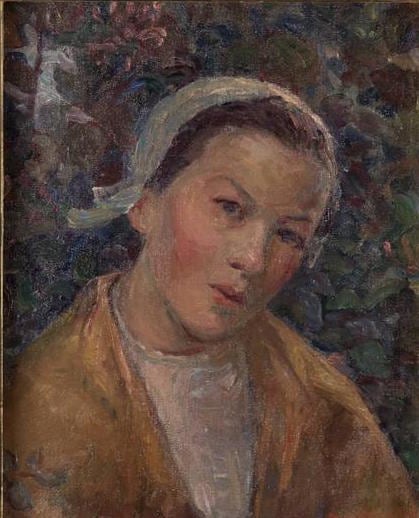American 1884 - 1914
Donald Beauregard was born 1884 in Fillmore, Utah, the son of a rancher. His family recognized his artistic talent early, and he had his first art lesson at the age of eleven by an eastern teacher who was visiting central Utah. Beauregard felt confined in Fillmore, and in 1900, he left town, wandering for a while and then ending up at Brigham Young University. He studied there until 1903. During this year, he left BYU and continued his education at the University of Utah, studying under Edwin Evans for three years and becoming his assistant in 1904. In 1906, Beauregard graduated from the University with high honors. Evans said, "He was a brilliant student who excelled in every phase of academic work." Beauregard demonstrated his versatility by winning honors in art, oration, and debate.
In this same year of 1906, he saved his money until he could afford to travel to Europe, where he studied at the Academie Julian in Paris. While in Paris, Beauregard won many prizes for his work, including a first prize, with the work becoming part of the school's permanent collection. He financed his stay by writing special features and by drawing cartoons for newspapers. Beauregard made many discoveries about art while in Paris. At first, he followed Monet and the Impressionists and traveled and painted in Flanders. Later, he looked to Gauguin and Cezanne and began to incorporate cubist ideas into his expressionist landscapes.
In 1908, he returned to Utah and became the Director of Art in the Ogden City School District. Before going to Europe, Beauregard had won first prize in the Utah Art Institute exhibit, and in 1909, after his return, he again won first prize. This second award helped him get a job as an illustrator for Western Monthly magazine and as correspondent for the Deseret News. Summer archaeology work led eventually to contact with Frank Springer, a wealthy New Mexico art patron, who became Beauregard's sponsor. Springer bought some of Beauregard's paintings and financed his second trip to Europe, where he spent the entire trip painting and sketching in Spain, France, and Germany. These paintings sold well to Europeans, and after his return, to Americans.
Source: Springville Art Museum


